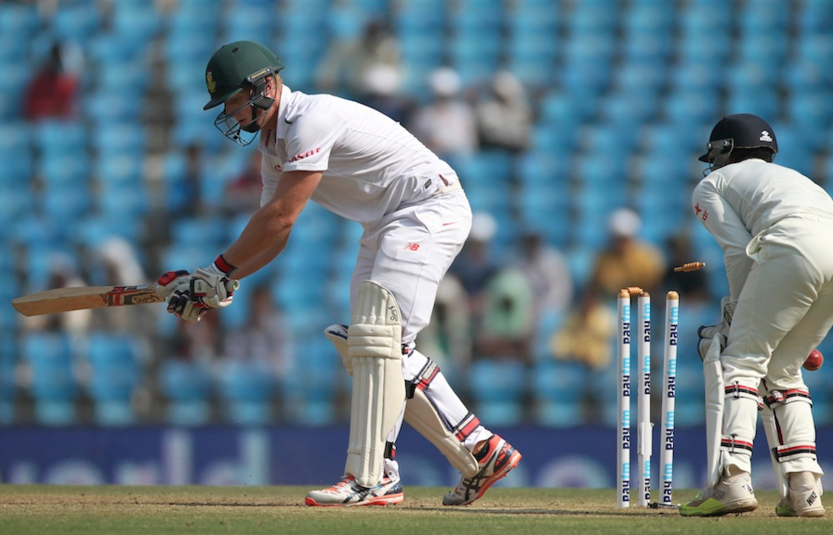Five talking points from the Test series against India, which South Africa lost 3-0.
Morne shines
Eric Simons called it a ‘watershed’ series for Morne Morkel and the South African fast bowler certainly did have an outstanding series. Morkel was menacing in conditions that didn’t suit him and was a constant threat whenever he was asked to bowl. He led the attack brilliantly in the absence of the injured Dale Steyn and that is probably the biggest reason why he did so well. Morkel stepped up and took the responsibility upon himself and it had a transformative effect on him. He took nine wickets in three Tests at 20.66 and if he can bowl the same lengths against England that we saw in India, he will be a handful.
What next for Tahir?
This was also supposed to be a watershed tour for Imran Tahir as he made his comeback to the Test arena, but ironically the selectors will have more questions than answers. Tahir was undone by two things: A surprising lack of runs scored by South Africa’s batsmen and his own inconsistency. Tahir’s tendency to go for runs despite taking wickets caused Hashim Amla not to trust him, even if conditions heavily favoured spin bowling. There was a fear of leaking runs and it must have affected his confidence. Overall Tahir did well under the circumstances and it shouldn’t be forgotten that he was South Africa’s leading wicket-taker in the series with 14 scalps at 21.25. However, he was also the only spinner to play all four Tests and in the end he wasn’t that much better than Simon Harmer and Dane Piedt to guarantee his future selection for away tours.
Scapegoating
Who was to blame for the series defeat against India? It was the batsmen who didn’t score enough runs. Just one or two? No, all of them. Why then has Stiaan van Zyl and Dane Vilas been made scapegoats by some fans in the aftermath of the tour? Both players struggled, but so did all the other batsmen bar AB de Villiers. Hashim Amla had one of the worst series with the bat in his entire career. Dean Elgar’s highest score was 38, Van Zyl’s was 36. Faf du Plessis got three ducks. JP Duminy played maybe one innings of substance. Vilas got his chance and blew it, but why does he only get one chance (on a tough tour) but other players continue to get picked? South Africa, as a collective, are to blame for the 3-0 drubbing and not just one or two players.
How good are India really?
That is the question they need to ask themselves. Home ground advantage has been repeatedly used as an excuse for the pitches that were produced, but when the home team also struggles to score runs in those same conditions it defeats the purpose. Virat Kohli says India can now go and win more Tests away from home as well. Only time will tell but it will interesting to keep an eye on them and see how they go in 2016. Ravi Ashwin is a good bowler but he won’t get those types of wickets outside India anytime soon. The question India have to ask themselves is, how adaptable are they as a team?
What does it mean?
The manner in which the Proteas lost the Test series have caused people to forget that they won the T2o and ODI series before that, which are no mean feats in itself. The question then becomes how do we rate the tour? Was it a success or a failure? South Africa pride themselves on their Test status but they are also an ODI and T20 team trying to improve. Considering the pitches they played on, which they had never encountered before (has anyone recently?) and the fact that key first-choice players like Steyn and Vernon Philander were injured, the tour certainly can’t be classified a failure. It wasn’t a rousing success either because the margins of defeat in the Tests were too big for a team ranked No 1 in the world. England will be a good indicator of where this team is.







